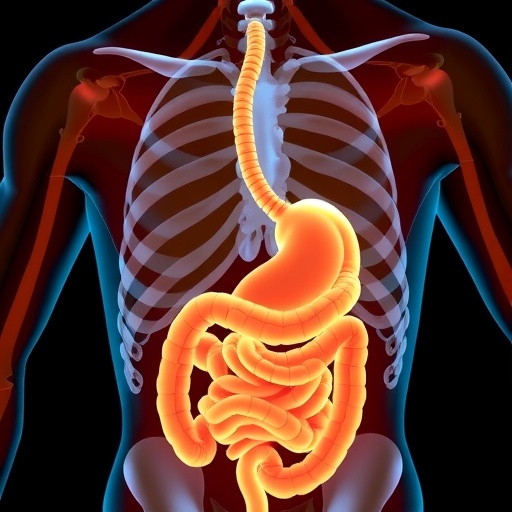Kyoto University reverse engineers cellular mechano-chemical feedback system

Credit: Kyoto University
Kyoto, Japan — Cells work around the clock to deliver, maintain, and control every aspect of life. And just as with humans, communication is a key to their success.
Every essential biological process requires some form of communication among cells, not only with their immediate neighbors but also to those significantly farther away. Current understanding is that this information exchange relies on the diffusion of signaling molecules or on cell-to-cell relays.
Publishing in the journal Developmental Cell, a research team at Kyoto University’s Graduate School of Medicine reports on a novel method of communication relying on ‘mechano-chemical’ signals to control cell movement. The research group focused on a fundamental pathway — MAPK/ERK, or ERK pathway — and were able to demonstrate how the movement of a single cell could trigger a cascading reaction resulting in the migration of a cell collective.
“Mechanical and biochemical signals in cells fundamentally control everything from homeostasis, development, to diseases,” explains Tsuyoshi Hirashima, leader of the study.
“We knew from past experiments how vital the ERK pathway is in cell activity, but the mechanism of how it can propagate in a collection of cells was incomplete.”
MAPK/ERK is so fundamental that it exists in all cells, controlling a wide range of actions from growth and development to eventual cell death. The pathway is activated when a receptor protein on the cell surface binds with a signaling molecule, resulting in a cascade of proteins and reactions spreading throughout the cell’s interior.
Employing a live imaging technique that can visualize an individual cell’s active ERK pathway, the team began observing the effects of cell movement. What they found was unexpected: when a cell began to extend itself, ERK activity increased, causing the cell to contract.
“Cells are tightly connected and packed together, so when one starts contracting from ERK activation, it pulls in its neighbors,” elaborates Hirashima. This then caused surrounding cells to extend, activating their ERK, resulting in contractions that lead to a kind of tug-of-war propagating into colony movement.
“Researchers had previously proposed that cells extend when ERK is activated, so our results came as quite a surprise.”
The team incorporated these observations into a mathematical model, combining mechano-chemical regulations with quantitative parameters. The output demonstrated consistency with experimental data.
“Our work clearly shows that the ERK-mediated mechano-chemical feedback system generates complicated multicellular patterns,” concludes Hirashima.
“This will provide a new basis for understanding many biological processes, including tissue repair and tumor metastasis.”
###
The paper “ERK-Mediated Mechanochemical Waves Direct Collective Cell Polarization” appeared on 3 June 2020 in Developmental Cell, with doi: 10.1016/j.devcel.2020.05.011
About Kyoto University
Kyoto University is one of Japan and Asia’s premier research institutions, founded in 1897 and responsible for producing numerous Nobel laureates and winners of other prestigious international prizes. A broad curriculum across the arts and sciences at both undergraduate and graduate levels is complemented by numerous research centers, as well as facilities and offices around Japan and the world. For more information please see: http://www.
Media Contact
Raymond Kunikane Terhune
[email protected]
Related Journal Article
http://dx.




